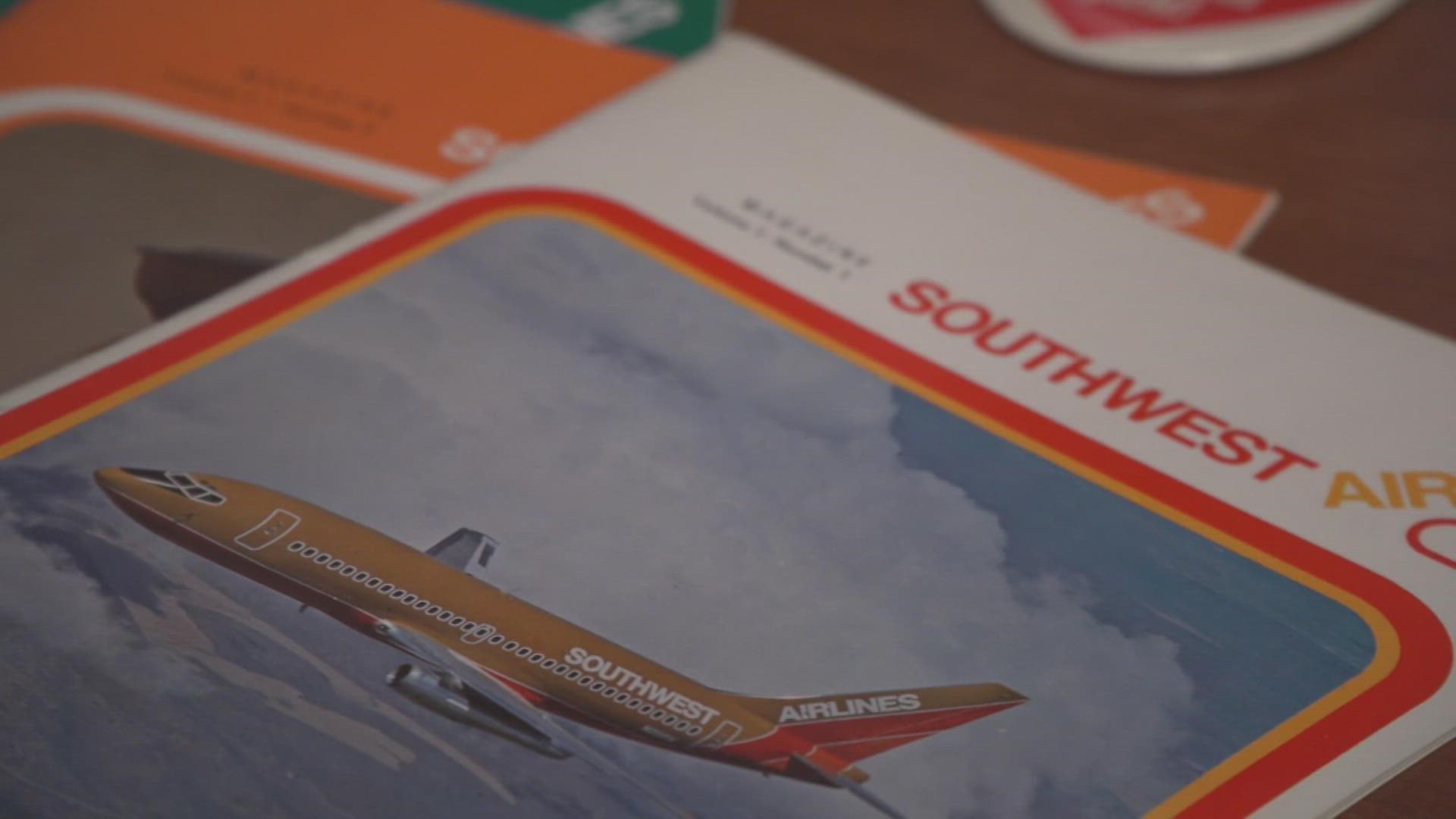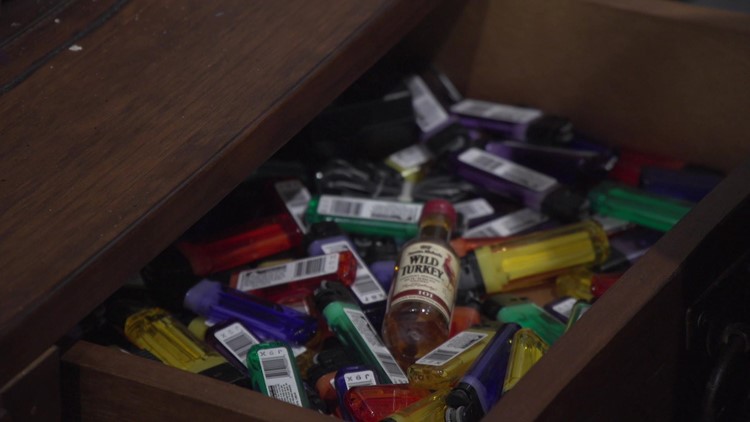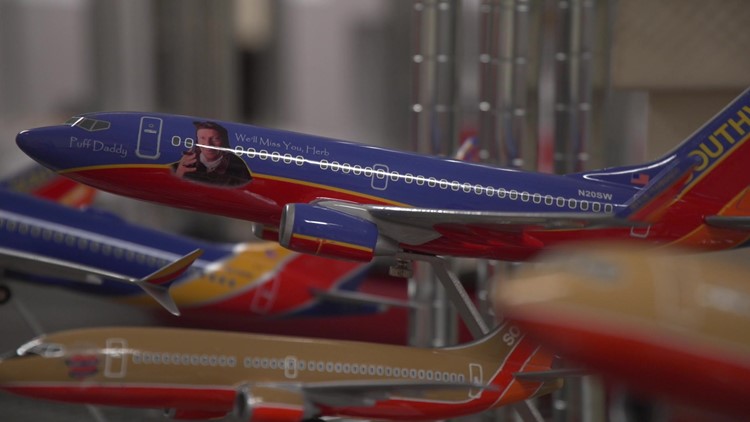DALLAS — Southwest Airlines employs 55,000 people to keep it in the air each day and perhaps no one has more of a unique position than Richard West.
“I’d like to think so. I absolutely love it. Every day I learn something new and there’s just so many great people that help share that story,” he said while pushing open the door to the airline’s historical archive room.
He is a repository for Southwest knowledge, history and trivia.
“So, down here on the left that’s a little bit of 1971’s finest. It’s our original hostess – or what we call now flight attendant – uniforms,” West said pointing to orange shorts and tops that cabin crewmembers wore more than 50 years ago.
“This is the very first in-flight magazine that Southwest had. Volume one. Number one,” he added, showing old publications.
Behind him sat a 1990s-era personal computer tower.
“This was the very first web server that powered Southwest.com,” West explained. It looks like a simple consumer PC from 30-years ago.
As the corporate historian, Richard collects stuff that tells the story of Southwest including decades of different seat styles, rubber stamps that gate agents used before computers, even a copy of the legislation signed by President Bush that abolished the Wright Amendment, allowing Southwest fly nationwide from its Dallas headquarters.
And, of course, the proofs from classic advertising that the helped define the airline.
The airline’s archive is a half-million items and growing. Southwest started it seven years ago to hang on to its history.
Inside the Southwest Airlines archives
“I think that’s what’s important is remembering where we came from so that our employees, as we evolve, can continue to grow and support what the airline was founded on. We were founded on being a maverick, on breaking all the rules, and in many ways even though we are about to celebrate 51 years this year, we’re still doing those same things,” said Whitney Eichinger, Southwest Airlines Vice President of Culture and Engagement.
Southwest is also digitizing all of its content.
“Yes, eight or nine pallets at a time,” West said.
It’s uncertain how many corporations maintain archives. One study in the U.K. estimated about 20-percent of companies actually employ archivists who maintain collections.
Herb Kelleher’s office might be the biggest exhibit. He was the airline’s legendary co-founder who later became its CEO. He died in 2019.
“We came in the morning after he passed away and took really detailed photographs of where everything was,” West said. “So, when the space was built out, we put everything back the way we found it.”
Kelleher’s ash tray still sits there next to cough drops and an untouched drawer full of lighters and Wild Turkey.
Southwest moved the entire office about 25-feet from its original location so the airline could erect a glass wall for passing employees to gaze through.
“Some of our most treasured possessions are in here. Behind that door over there, our very first operating certificate that we received from the Texas Aeronautics Commission,” West continued.
That’s the piece of paper that let the airline legally begin flying. Back then, it was called Air Southwest.
There is one thing that Richard West wants to add to the archive but has not been able to locate.
“That original cocktail napkin,” he said. “I would absolutely love to have that.”
That legendary napkin on which the idea for Southwest was born.
It is one element of an evolving story, about an underdog airline that defied the odds.

















